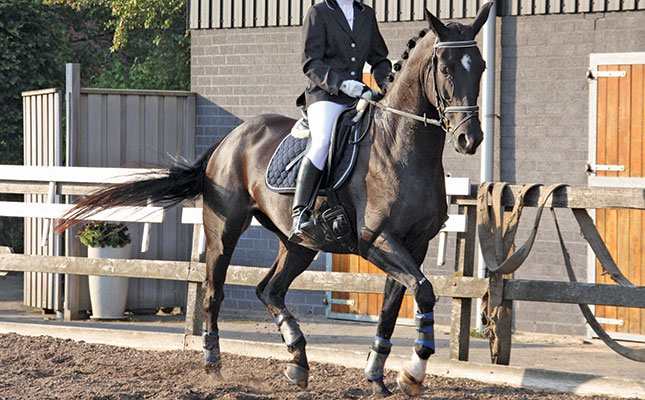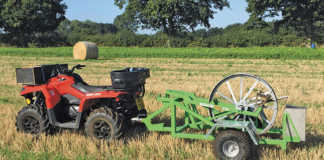
Photo: Patricia van den Berg
Equine athletes, like human athletes, put a great deal of strain on their ligaments and joints when competing, especially at a high level. Adequate rest and systematic training and riding are a very important part of maintaining joint health.
The main precaution that should be taken by owners and trainers is never to administer intra-articular injections yourself! Only qualified equine veterinarians have the knowledge and experience to do them successfully. Moreover, prescription drugs are mostly used for these kinds of injections.
Local anaesthetics are used for diagnosing ligament or joint problems, while corticosteroids, such as hyaluronate sodium (Legend), and polysulphated glycosaminoglycan (Adequan), are injected to reduce joint pain and inflammation.
Special precautions for joint injections include correct injection technique and sterility. Intra-articular injections should not be made through skin that has been recently fired or blistered. After being injected, horses should not be worked before the specified rest period (up to 30 days) has been completed.
A tool for diagnosis
When a horse is examined for lameness, it is relatively easy to see which leg is affected by trotting the horse out and palpating all its joints.
In many cases, however, the only way to clearly demonstrate the location of the injury is to block the nerves in the identified leg by injecting local anaesthetic into the suspected injured joint.
A recent publication by two equine experts in the US mentions that they do not wait for a horse to become lame before injecting an anti-inflammatory medication into a joint.
Often, they can judge which joint is affected by watching the horse work. Lack of impulsion or balance, or a reluctance to turn to one side, are early indications of joint problems. Joints that are slightly swollen, or are painful when flexed, are typical signs of synovitis (inflammation of the joint lining).
The joints injected depend on the discipline and age of the horse. In showjumping, for example, it’s mainly the hock joints that become stressed or injured; in dressage, it’s usually the coffin joints, lower hocks or stifles, and even the sacroiliac joints in older horses; and for reining, it’s usually the stifle joints.
It is a good idea to have X-rays taken or an ultrasound done before deciding on treatment.
Adverse effects and complications
One of the main disadvantages of intra-articular injections is that many horses do not stand still enough unless tranquillised. This has both cost and safety implications.
Failure to improve pain or lameness after intra-articular injections may be because there is peri-articular pain, a fracture, or inflammation in a tendon sheath rather than the joint. It may also appear to be ineffective if the horse was worked too soon after treatment.
Joint inflammation and septic arthritis are side effects of joint injections that are fairly expensive to manage and treat.
Another disadvantage is cost; intra-articular injections are expensive.
The rest period is longer, and there is no real evidence to suggest that their effect on joints is superior to those medications administered parenterally.
However, there is evidence that injecting corticosteroids intra-articularly delivers better results than administering the medications in feed.
Dr Mac is an academic, a practising equine veterinarian and a stud owner.










